If you want your embroidery designs to look as good as possible, then the type of fabric you use is very important. But with so many different outfits out there, how do you know what type to use? That’s why I have created this guide to tell you what is the best fabric for embroidery so that you do not have any difficulty in choosing.
When choosing fabrics for embroidery, natural fabrics work better than synthetic fabrics. They are more uniform and have the right amount of weight and stretch.
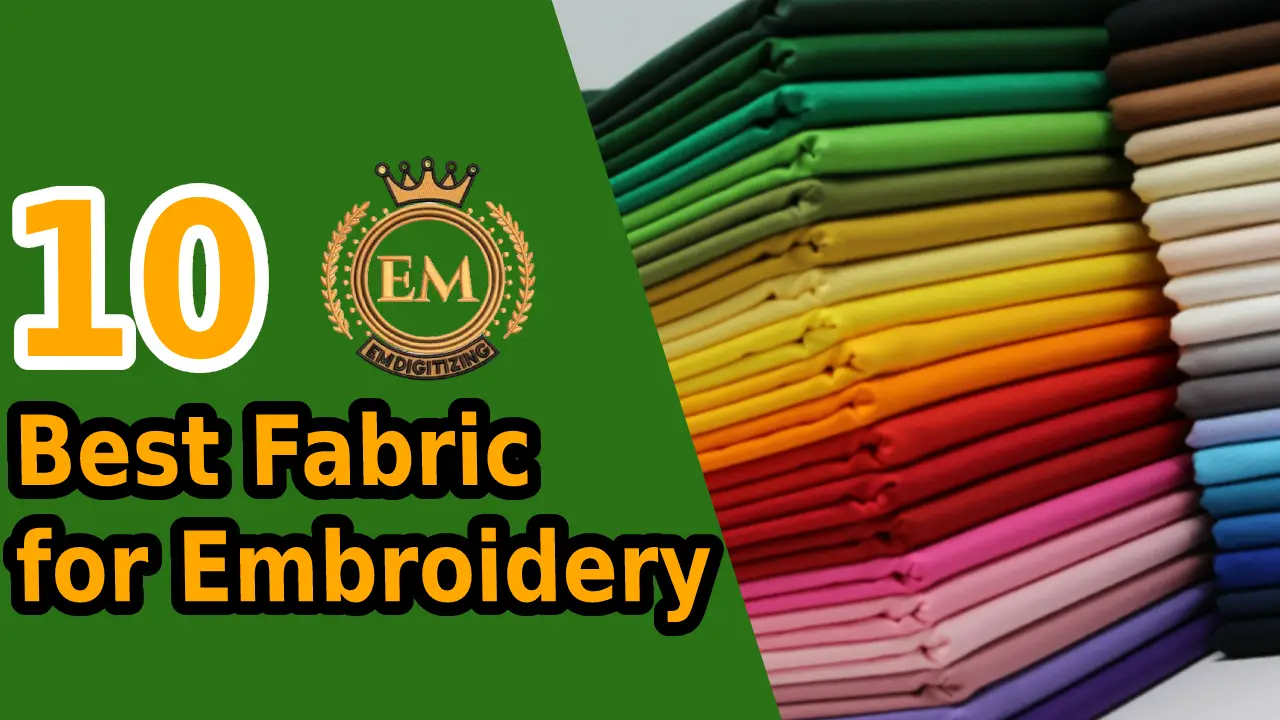
Embroidery Digitizing Services
What is the best fabric for embroidery?
If you’ve ever tried an embroidery project and found that the design didn’t look exactly as you expected, or that the needle was too hard to insert into the fabric, chances are That you were not using. The right kind of clothes. Whether you’re embroidering a piece of clothing, embroidering accessories, or just making home decor, here are some of the best fabrics to use.
Cotton
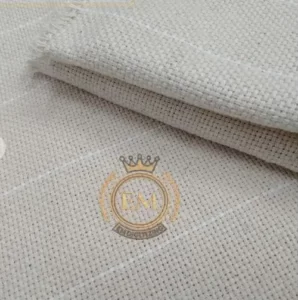 Cotton is one of the most versatile best fabrics for embroidery projects. Whether you’re buying cotton fabrics or embroidering ready-made items like pillows, fabrics, or curtains, you can’t go wrong.
Cotton is one of the most versatile best fabrics for embroidery projects. Whether you’re buying cotton fabrics or embroidering ready-made items like pillows, fabrics, or curtains, you can’t go wrong.
However, it is important to note that there are many specific types of cotton fabric, some of which I will discuss later. But in this example, I’m talking about standard 100% cotton fabric. Not only is it expensive, but it also comes in many different colors if you don’t want a white background for your design.
The downside of cotton is that it can shrink easily. While many cotton fabrics have already shrunk today, they are not all. It is important that you wash the cotton before using it for embroidery so that if it shrinks, washing it later will not spoil the shape of your design.
Linen
 Linen is another best fabric for embroidery, especially for clothing. It has very uniform and tight-knit, which can help your stitches look more permanent. In addition, Lenin has a unique texture that complements the full shape of the embroidered stitches.
Linen is another best fabric for embroidery, especially for clothing. It has very uniform and tight-knit, which can help your stitches look more permanent. In addition, Lenin has a unique texture that complements the full shape of the embroidered stitches.
If you are a hand-embroidered designer, linen is one of the top choices for clothes that you can use. It is also good to use for machine embroidery, although you may need to make additional modifications when embroidering large designs to prevent the fabric from moving too much.
Linen doesn’t come in as many colors as cotton fabrics, and untainted and untreated linen is usually gray or brown. You can buy white fabric, but in some cases, if you want it to be a certain color, you will have to bleach or dye it before embroidering.
Canvas
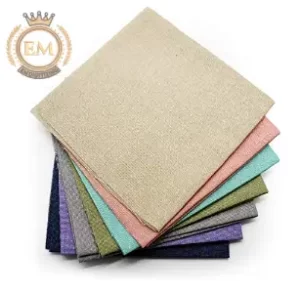 Canvas is a popular material used for making shoes and bags, but also for making cloth sacks. It is usually made mainly of cotton or linen but may contain some synthetic fibers. It is very easy to embroider by hand with the embroidery hoop, and it is very easy to puncture the needle.
Canvas is a popular material used for making shoes and bags, but also for making cloth sacks. It is usually made mainly of cotton or linen but may contain some synthetic fibers. It is very easy to embroider by hand with the embroidery hoop, and it is very easy to puncture the needle.
Common colors of canvas fabric range from white to ivory to gray, so it’s really easy to pop on different colors. And just as you can use plain canvas fabric for embroidery designs and home decor, it will not be difficult to embroider something like a broken bag made of canvas fabric.
Canvas shoes can be a little more difficult to embroider just because of their shape. Another thing you have to be careful with is the canvas as some of it may be a little thicker than usual which may make it difficult to embroider.
Denim
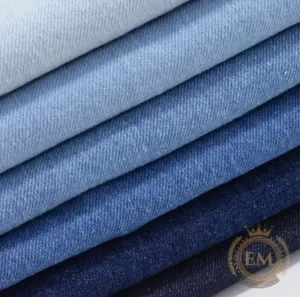 It is not uncommon to see denim jackets or jeans embroidered with beautiful designs. This is because denim is very easy to embroider because most of it is made of cotton. Also, denim comes in many different colors and washes, so it’s easy to choose one that will make your embroidery pop.
It is not uncommon to see denim jackets or jeans embroidered with beautiful designs. This is because denim is very easy to embroider because most of it is made of cotton. Also, denim comes in many different colors and washes, so it’s easy to choose one that will make your embroidery pop.
Since denim is embroidered primarily with clothing, you may be wondering how this design will survive over time. As long as you know what you’re doing, you shouldn’t have a problem with stability. But if you have never embroidered on denim before, you may want to start with another fabric first to practice the design you want to embroider on denim.
Another great thing about denim is that it is a medium-weight but very tight fabric, which means it won’t move much when you embroider it. However, its stiffness can make small stitches more difficult, so it’s a good idea to stick to basic designs until you find an embroidered denim hang.
Aida Cloth
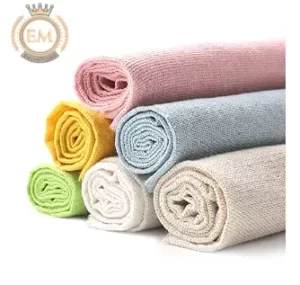 Aida fabric is a special fabric that is open but even woven. Aida is not ideal for all types of embroidery, but it is one of the most common choices for cross stitch embroidery. The fabric resembles a thick mesh so that it can be embroidered without the use of an embroidery hoop due to its stiffness.
Aida fabric is a special fabric that is open but even woven. Aida is not ideal for all types of embroidery, but it is one of the most common choices for cross stitch embroidery. The fabric resembles a thick mesh so that it can be embroidered without the use of an embroidery hoop due to its stiffness.
Cross stitch is a little different from other types of embroidery because most cross stitching is done by hand. It is mainly used for home decoration projects and not necessarily for embroidering clothes and accessories. If a cross-stitch is the basic type of embroidery you are going to do, then this is the best fabric for embroidery.
Muslin
Muslin is a lightweight, loose-fitting fabric made of cotton. It looks a bit transparent, so it can make some great embroidery designs. However, it is difficult to embroider, so it is not ideal for beginners.
Even if you have a lot of experience in embroidery, it is important to stick to simple designs, especially if the designs are large. Designs with simple lines and stitches are best because muslin tends to move, even with stabilizers.
Silk
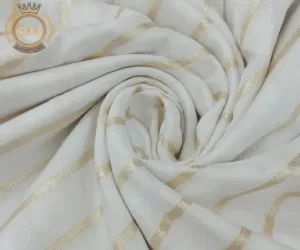 Silk is another best fabric for embroidery that requires a lot of experience to embroider. It is a lightweight and delicate fabric that can easily tear and move when you are embroidering on it, both of which can affect the overall look of your design.
Silk is another best fabric for embroidery that requires a lot of experience to embroider. It is a lightweight and delicate fabric that can easily tear and move when you are embroidering on it, both of which can affect the overall look of your design.
The string can be embroidered by hand or with an embroidery machine, but you will want to use a stabilizer and keep your design simple. When you embroider on it, it will prevent the fabric from moving, pulling, and tearing.
Satin

Satin is another fabric that can be embroidered, but it is not ideal for beginners. This is because satin can move easily due to its lubricating structure. The use of sharp needles and stabilizers with the machine is the key to successful satin embroidery.
Although embroidered on satin can look beautiful if done correctly, you also have to be careful with the designs you choose as satin is a drape fabric. Large designs can interfere with how fabrics are made, so it is important that you stick to small and simple designs when embroidering satin.
Even-Weave
Even-weave Fabrics are not made from a specific type of fiber. Rather, the term refers to a group of garments with the same stitches vertically and horizontally. It makes a fabric with a uniform texture, hence the name. These clothes can also be called balanced clothes.
Even-Weave Fabrics are ideal for embroidery and cross-stitching because they ensure a more durable design. The use of uniformly woven fabrics helps to make your stitches more uniform, creating an integrated design.
These are great clothes for people who sew more intricate designs or even start with embroidery. Most smooth fabrics are made from a blend of cotton and raven, so it’s important to make sure you wash the fabric before embroidering on it, as both can shrink.
Polyester
Although natural fabrics are best for embroidery, synthetic fabrics are an exception. You can easily embroider polyester. However, you will need to make some adjustments to the tools you use.
First of all, it is important that you use a thread made of synthetic material. Polyester thread works best, but you can also use raven yarn as it is a semi-synthetic fiber. When embroidering polyester, the raven thread can bring a slightly different look and feel to your embroidery design.
One problem with synthetic fabrics is that they can be woven so tightly that the needle can be easily pulled in and out without damaging the fabric. Choose a polyester fabric that is loosely woven, or use a ballpoint needle that is easy to push into the fabric.
Also choose a design with some light stitches, as too many stitches or stitches that are too thick can tear the fabric. Consider choosing polyester and cotton blends, which will be easy to embroider but also durable.
What is the best fabric for hand embroidery?
Any type of fabric in the list above is good for hand embroidery. With hand embroidery, designs are usually not that complicated and you can be a little more careful about using them. Cotton, linen, and canvas are usually the easiest and best choices for hand embroidery, especially for beginners, due to the texture and weight of the fabric.
Aida fabric is best for cross stitch embroidery, which is usually done by hand. If you are going to use a fabric like muslin or satin for hand embroidery, it is important to use an embroidered hoop to act as a stabilizer for the fabric.
Which fabric is best for machine embroidery?
Any woven fabric is best for machine embroidery, including cotton, linen, and polyester. But, denim and heavy canvas are usually best if they are machine-embroidered because they are slightly stiffer than fabrics such as cotton and linen. Machine embroidery allows you to embroider large and intricate designs, such as what is seen on denim.
It is possible that people who have experience in embroidery can embroider thin fabrics such as with silk or satin machine, and maybe even woven fabrics. Although, you will have to use a stabilizer. Otherwise, the fabric will move too much, which will ruin your design.
Conclusion
The best fabric to use for embroidery should be of medium weight, firmly and evenly woven, and with little or no stretch. If you are just starting out with embroidery, try something simple like cotton, linen, or any other knitted fabric. Once you get used to it, you can move on to other clothes. If you find this article useful, please share it with others, and feel free to leave a comment. Thanks for reading!
As a rule, natural woven fabrics are usually best for hand embroidery techniques. Choose cotton, wool, linen, or silk for your background, and choose the yarn that suits your technique and the yarns you are using.
Typically, fabrics with less than 150 threads, such as muslin, cotton, Ida, linen, flour sack, and Osnberg, will allow you to pull the needle and thread without any hassle.
Aida cloth
Aida cloth (sometimes also called Java canvas) is an open, uniformly woven fabric traditionally used for cross-stitch embroidery.
Due to its construction method, the feel blends well with the embroidery and can handle extremely complex designs without any tampering. It is useful for many craft and home decoration projects and is also a great choice for making framed pieces. Read on and discover the fun of feeling!
A fun, bold curated bundle of corner cotton! This is my favorite cloth for hand embroidery. It’s easy to sew (small, not even stretched with knitting), comes in a lot of amazing colors, and is very affordable.
